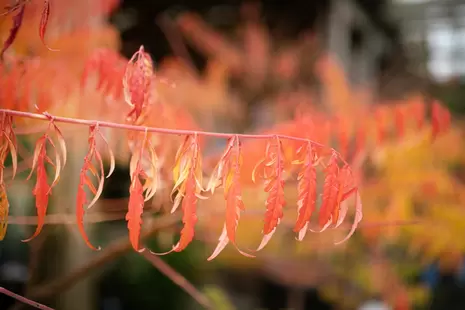Gardening For Fragrance
A fragrant garden is a garden created with the added dimension of scent. It only takes a bit of thought when selecting plants, but make sure you plan your fragrant garden with what you like, not what other people consider pleasing. The scent of your garden is personal. Fragrances from flowers and aromatic foliage can evoke wonderful memories and perhaps even transport you back to pleasant times.
Base Plants
Planning a fragrant garden is like mixing scents in a perfume vat. Some aromas are heavy while others may be lighter but linger longer. The following is a list of the most pungent plants, which act as your base note. Other scents will ride on these main scents.
Lavender
Daphne odora
Violets
Rugosa roses
Nicotiana
Basil
Lilies
Rosemary
Gardenia
Sage
Lilac
Hyacinths
Wisteria
Wormwood
Camomile
Stocks
Dianthus
Jasmine
Mints
Southernwood
Combining Colour and Scent
Fragrance and colour together have a strong effect on mood and emotions. Combining a fragrant garden with colours you find pleasing is sure to create magic. Bright colours generate a cheerful atmosphere, but white and green can impart a classic elegance. Blues are calming, while reds and yellows are invigorating.
It’s good to start your planning with a couple of your favourite “must have” scented plants and work from there. Planning first around the scented plants and then the coloured plants will result in a truly personal fragrant garden.
Remember not all the plants in a fragrant garden should be scented. Build the colour structure around the strongly scented plants, complement them with the colours of unscented plants while allowing your nose to rest between the plants and enjoy the lingering smell of your main feature. Did you know that with the exception of roses, fragrant flowers are usually light in colour and thick textured?
Mixing and Matching
You can mix similar fragrances to emphasize a specific effect. Try mixing lavender with fennel for a sweet, edible aroma. More experimentally, mix basil, tomato plants and lemon geraniums for a bloody Mary garden! Maybe you want to try a nostalgia theme, how about a garden full of lilacs, lily-of-the-valley, old roses and wisteria? The possibilities are endless when landscaping for fragrance.
Placement
Where you place your plants is almost as important as which plants you choose. If the smells are hidden, or placed downwind, the scents are wasted. Use fragrant evergreens to enclose areas and create a pocket of fragrance. Use evergreen climbers to camouflage boundaries and sheds, and plant fragrant pathways.
Place plants that give their scent off in the evening, close to daytime scented plants so they don’t compete with each other. Lightly scented plants should be surrounded by unscented plants, so you can appreciate their subtlety.
Scents by Night
Certain plants scent the night air almost exclusively. Nicotiana alata opens its trumpets in the early evening and releases its fragrance to moths, and other nocturnal pollinators. These evening plants compensate for their day-time dowdiness by drenching the air with their rich night-time fragrance. Here is a listing of nocturnal plants perfect for the fragrant garden.
Rockery pinks
Petunias
Evening scented stock
Tropical waterlilies
Evening primrose
Crinum lilies
Datura
Hosta plantaginea
Osmanthus fragrans
Click here to download a printable PDF.
FRAGRANT ANNUALS
Alyssum
Basil (Ocimum basilicum)
Calendula officinalis
Chamomile
Wallflower (Erysimum cheiri)
Chocolate cosmos (Cosmos atrosanguineus)
Sweet William (Dianthus barbatus)
Heliotrope (Heliotropum arborescens)
Annual candytuft (Iberis amara)
Lantana
Sweet pea (Lathyrus odoratus)
Signet marigold (Tagetes tenuifolia)
Flowering tobacco (Nicotiana alata)
Stocks (Matthiola spp.)
Nasturtium (Tropaeolum majus)
SHRUBS
Butterfly bush (Buddleja davidii)
Carolina allspice (Calycanthus floridus)
Fringe tree (Chionanthus virginicus)
Winter hazel (Corylopsis spp.)
Winter daphne (Daphne odora)
Witch hazel (Hamamelis spp.)
Wax-leaf privet (Ligustrum texanum)
Magnolia ‘Susan’
Japanese magnolia (Magnolia sieboldii)
Oregon grape (Mahonia aquifolium)
Burkwood osmanthus (Osmanthus x burkwoodii)
Pieris ‘Forest Flame’
Mock orange (Philadelphus spp.)
Flowering currant (Ribes spp.)
Lilac (Syringa spp.)
Spring bouquet viburnum (Viburnum tinus ‘Spring Bouquet’)
BULBS
Powell’s swamp Lilly (Crinum x powellii)
Crocus
Snowdrops (Galanthus spp.)
Summer hyacinth (Galtonia spp.)
Hyacinth
Madonna lily (Lilium candidum)
Oriental lily (Lilium orientalis)
Regal lily (Lilium regale)
Tuberose (Polianthes tuberosa)
PERENNIALS
Native ginger (Asarum caudatum)
King’s spear (Asphodeline lutea)
Lily of the valley (Convallaria majalis)
Greater sea-kale (Crambe cordifolia)
Rockery pinks (Dianthus spp.)
Gas plant (Dictamnus albus)
Hosta ‘Honeybells’
Hosta plantaginea
Lilies (Lilium spp.)
Mints (Mentha spp.)
Nepeta ‘Six Hills Giant’
Peony (Paeonia lactiflora)
Garden phlox (Phlox paniculata)
Moonlight primrose (Primula alpicola)
Tibetan cowslip (Primula florindae)
Spear primrose (Primula vialii)
Primrose, especially yellows (Primula vulgaris)
Mignonette flower (Reseda odorata)
Sage (Salvia officinalis)
Thyme (Thymus spp.)
Sweet violets (Viola odorata)
TREES
Horse chestnut (Aesculus hippocastanum)
Southern catalpa (Catalpa bignonioides)
Katsura (Cercidiphyllum japonicum)
Hinoki cypress (Chamaecyparis obtusa)
Spinning wheel eucalyptus (Eucalyptus perriniana)
Dwarf laburnum (Laburnum x watereri ‘Vossii’)
Spruce (Picea spp.)
Yoshino cherry (Prunus x yedoensis)
Black locust (Robinia pseudoacacia)
VINES
Chocolate vine (Akebia quinata)
Evergreen clematis (Clematis armandii)
Poet’s jasmine (Jasminum polyanthum)
Honeysuckle (Lonicera spp.)
Passionflower (Passiflora caerulea)
Star jasmine (Trachelospermum jasminoides)
Wisteria

